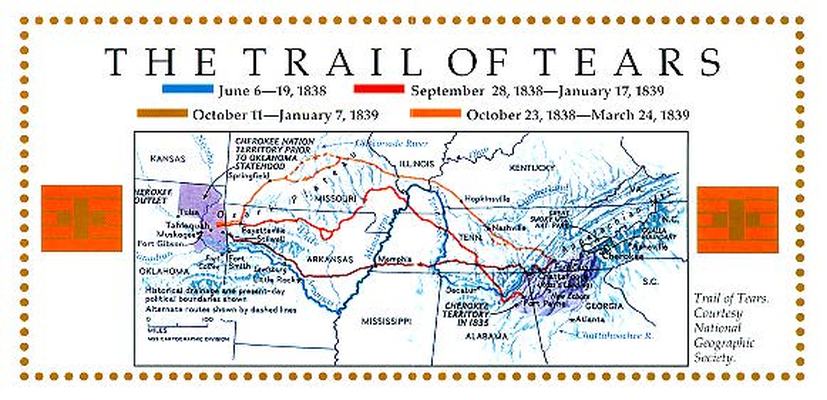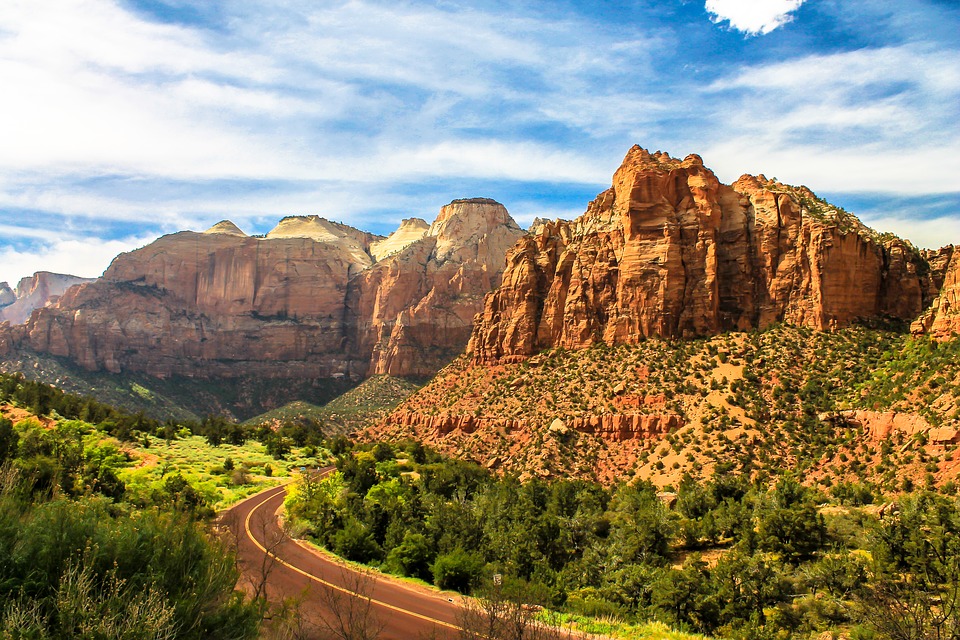At the height of summer in Tennessee’s eastern mountains Wednesday, kudzu was growing waist-high and higher at the gated entrance to the Trail of Tears segment, and the first 3- to 4-foot high berm is invisible under the thick, tangled vines. The tank trap on the other side of the first berm looks flat, but is covered with kudzu with water underneath of unknown depth, probably two to three feet deep. The trail itself is nearly impassable for the first 50 yards or so.
Ben Benton
Trail of Tears damage by Forest Service in Coker Creek still not fixed
COKER CREEK, Tenn. — Damage done in 2014 by the U.S. Forest Service to a section of the Trail of Tears in Monroe County, Tennessee, still has not been repaired, but federal officials say a fix is in the works.
In 2016, Forest Service officials admitted agency crews built as many as 35 earthen berms in 2014 to control erosion and discourage off-road vehicles along a little under a mile of the Trail of Tears that amounted to a “terrible error,” Southern Region U.S. Forest Service regional forester Tony Tooke said three years ago. On the far side of many of the berms — ranging from 2-4-feet high — equally deep “tank traps” were built to stop vehicles from being able to cross the berms.
Bonnie Marie Morris, a Coker Creek, Tennessee, resident who lives near the Trail of Tears/Unicoi Turnpike area, is fuming that the Forest Service hasn’t fixed the damage in more than five years.
Morris visited the site in May, noting “it appears that absolutely nothing has been done to rectify the damage to the Trail of Tears section near the Unicoi Turnpike.”
“I’d like to be able to walk the Trail like it was before the damage,” Morris said. “It is the right of any American Indian, or anyone else who has the desire to show their respect for the men, women, and children who had to walk that trail on their way to Oklahoma.
“It’s the responsibility of the Forest Service to fix it in a timely manner and not wait another five years to do it.”
Don’t give up yet, federal officials said this week.
On Thursday, Forest Service spokeswoman Stephanie Johnson said the federal agency has been “conducting a very deliberate and inclusive process involving tribal government representatives and other consulting parties” including the Alabama Coushatta Tribe of Texas, Coushatta Tribe of Louisiana, Eastern Band of the Cherokee Indians, Kialegee Tribal Town, Muscogee (Creek) Nation, Poarch Bank of Creek Indians, Thlopthlocco Tribal Town, United Keetoowah Band of Cherokee Indians, Coker Creek Heritage Group, National Park Service/National Trails Intermountain Region, Tennessee Valley Authority, Tennessee State Historic Preservation Officer and the Advisory Council on Historic Preservation.
“Because of the cultural, spiritual and historical significance of this site, meetings with tribal representatives and other consulting parties have been ongoing since 2015,” Johnson said in an email. “In 2017, the U.S. Forest Service signed a formal apology for the damage to the Trail of Tears during a special ceremony with tribal government representatives. Also, extensive archaeological inventory and assessment work have been conducted, leading to this section of the Trail of Tears now being eligible for Historic Places designation by the Advisory Council of Historic Preservation.”
Meanwhile, nature is taking its course.
At the height of summer in Tennessee’s eastern mountains Wednesday, kudzu was growing waist-high and higher at the gated entrance to the Trail of Tears segment, and the first 3- to 4-foot high berm is invisible under the thick, tangled vines. The tank trap on the other side of the first berm looks flat, but is covered with kudzu with water underneath of unknown depth, probably two to three feet deep. The trail itself is nearly impassable for the first 50 yards or so.
What the trail farther north lacks in kudzu, it makes up for in dense weeds and undergrowth but it’s still walkable, if just barely. On the other hand, there was no obvious recent damage from off-roaders — one of the things the berms were intended to prevent — or even many signs of anyone or anything passing through but animals.
See the remainder of the article and photos here
Free Range Report
Thank you for reading our latest report, but before you go…
Our loyalty is to the truth and to YOU, our readers!
We respect your reading experience, and have refrained from putting up a paywall and obnoxious advertisements, which means that we get by on small donations from people like you. We’re not asking for much, but any amount that you can give goes a long way to securing a better future for the people who make America great.
[paypal_donation_button]
For as little as $1 you can support Free Range Report, and it takes only a moment.



